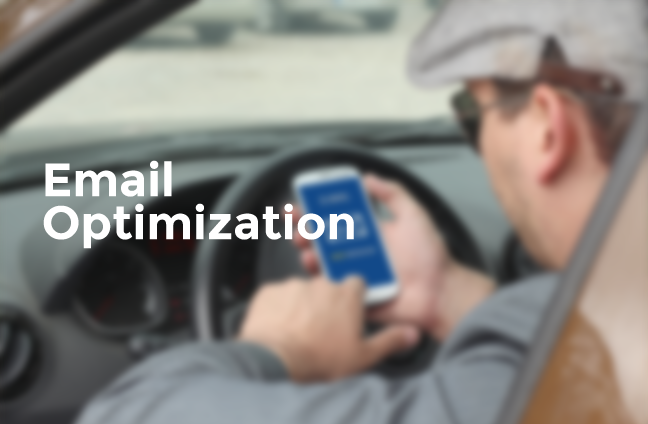Winning mobile moments is essential for brands and businesses. You must be wherever consumers are, but you also must meet their expectations and provide a great mobile experience. Is a bad mobile experience costing you conversions and sales right now?
More consumers own mobile phones than toothbrushes. Yet, marketers “suck at converting mobile visitors,” according to Margot da Cunha, content marketing specialist at WordStream, a SaaS search marketing platform. So what do brands and businesses need to know to make it as easy as possible for consumers to convert, regardless of device?
Digital marketing experts recently dove deep at SMX Advanced to provide practical advice on how to boost mobile conversion rates. Here are their 10 best tips.
1. Streamline Task Completion
Brands should ask for the least amount of necessary information when trying to convince consumers to sign up for newsletters on mobile devices, according to Lisa Williams, president of Sustainable Digital Marketing. That means requesting, say, a consumer’s birthday, as Adidas does, is perhaps superfluous at that particular point in time.
“Keep it concise, fast, quick,” Williams said. “Get people to complete it and move on.”
A good example is 1–800 Contacts, which allows consumers to submit prescriptions with photos, she said.
“Anything you can do to shorten time of conversion is big,” da Cunha said.
2. Enable Cross-Device Flow
Per Williams, by 2017, the average consumer will have seven devices, and, per Phoebe Hanley, director of ad management at social ad company SocialCode, 32 percent of desktop conversions start with mobile search.
And that means brands should make it easy for consumers to use multiple devices along the path to purchase. That includes populating information from a recent search on other devices so they don’t have to start their searches all over again when using a different device.
Williams points to researching a Dyson vacuum on her phone and then finding the same vacuum on the Bed, Bath & Beyond website on another device when she returned later.
“You want there to be a flow,” Williams said. “Bed, Bath & Beyond did a great job of showing me the exact Dyson model I was looking at it so I didn’t have to work so hard.”
3. A Conversion Is A Conversion
In other words, desktop conversions are OK, too.
Hanley notes there are certain occasions when consumers simply feel more comfortable converting on a desktop, such as when they are looking for an insurance quote and need to provide a lot of personal information. Marketers should take that into consideration.
4. Don’t Forget Location
Williams also noted search queries for “near me” are increasing. Marketers should keep physical location in mind and cater to location-based queries to best capture consumer interest and intent.
5. Perform User Testing
Again, while she notes it is “awesome” for brands to ask consumers how they are doing, there is a time and place for user testing, Williams said. For example, a pop-up from Best Buy asking mobile consumers for feedback before they have done anything at all on the mobile site is ill-timed.
6. Send Reminders
Designer dress rental service Rent the Runway, for example, will send users reminders about potential purchases when they add dates to a calendar about upcoming events. That makes it easy for consumers to remember a special occasion is approaching and to potentially complete the purchase.
7. Speak To On-The-Go Searchers With A Short Attention Span
“It’s all about micro-moments,” da Cunha said. “[Mobile searchers’] attention is easily distracted. They are searching while doing other things and a mobile strategy needs to keep this in mind.”
In addition, she said Google is improving its mobile user experience so searchers can do more faster through search results pages precisely because they are so easily distracted. This includes evolving vertical mobile ad formats for several industries, such as automotive and travel.
“The new mobile ad formats capture micro-moments,” da Cunha said. “The old format was a plain text ad that was not that exciting, but now for the automotive [industry], you have carousel ads to swipe through to see new [car] models.”
Per Hanley, beautiful new ad units like this, which sometimes even include video, allow marketers to tell better stories and provide “limitless creative options.”
In the meantime, brands in other industries can work to make sure their ads are mobile-preferred because they will see higher CTRs and conversion rates.
“Mobile conversion rates suck,” da Cunha said. “You want to try out new mobile ad formats and add ad extensions.”
In addition, da Cunha said marketers should strive to be the first to try out new mobile ad formats, which can set them apart and grab conversions from competitors.
8. Don’t Necessarily Target Mobile Keywords
Per da Cunha, 15 percent of Google searches are unique and have never been searched for before. In fact, she goes as far as saying mobile keywords are actually dying and marketers should instead try out dynamic search ads.
“Targeting keywords is on its way out,” she said. “PPC is becoming more automated.”
Further, she adds, “Chasing keywords on mobile is a fool’s game.”
9. Include Mobile In The Lead Generation Process
If a brand has a really bad mobile experience, it may not get certain customers – like millennials – back, Williams said.
10. Test, Learn, Scale
“Mobile is the Wild West,” Hanley said. “You kind of want to be first people there. The return will be huge if you’re the first person.”
In addition, per Williams, simply being the first company that comes to mind when trying to solve a problem may, in the end, be the best way to convert, regardless of device.
What are some ways you’ve successfully boosted your mobile conversion rates?


